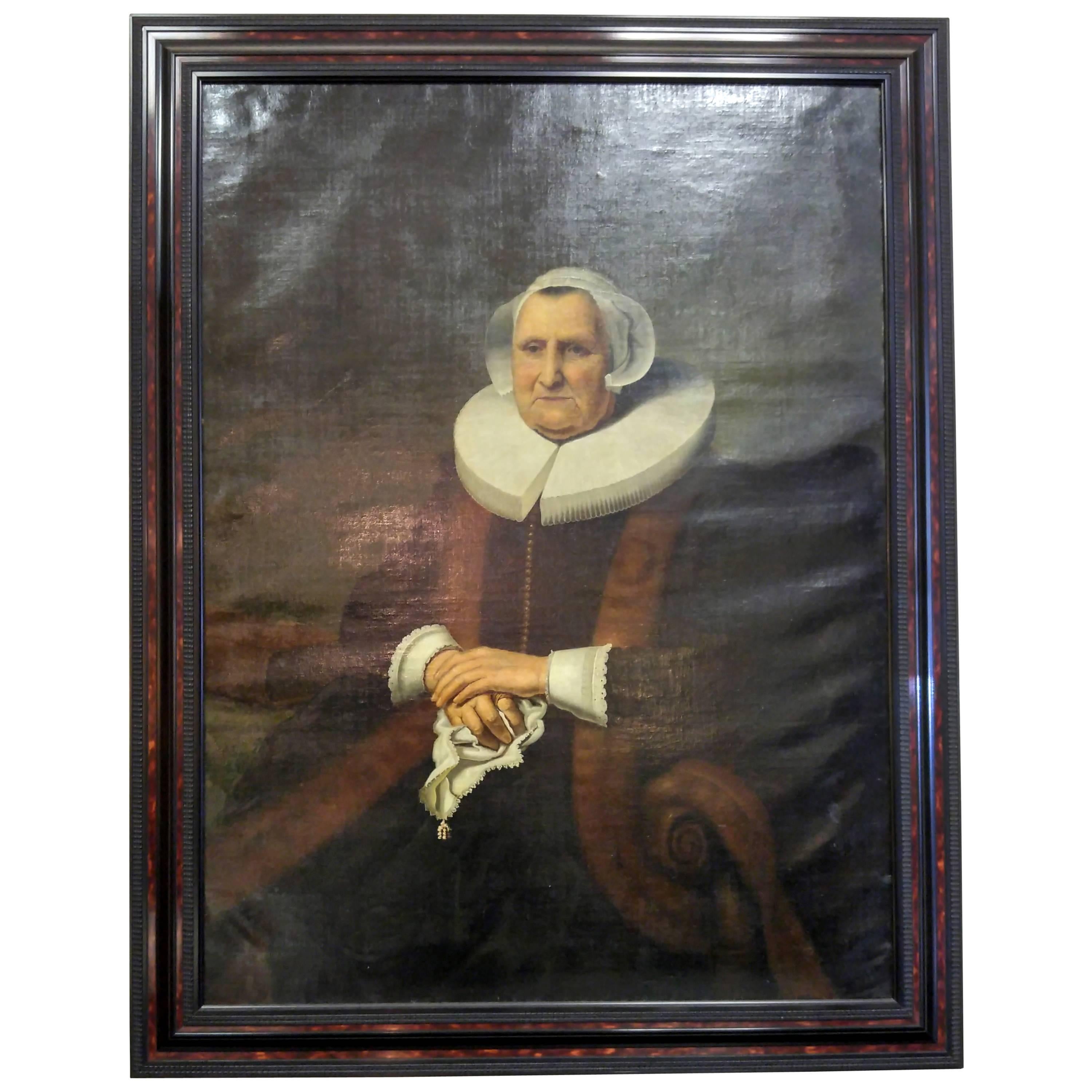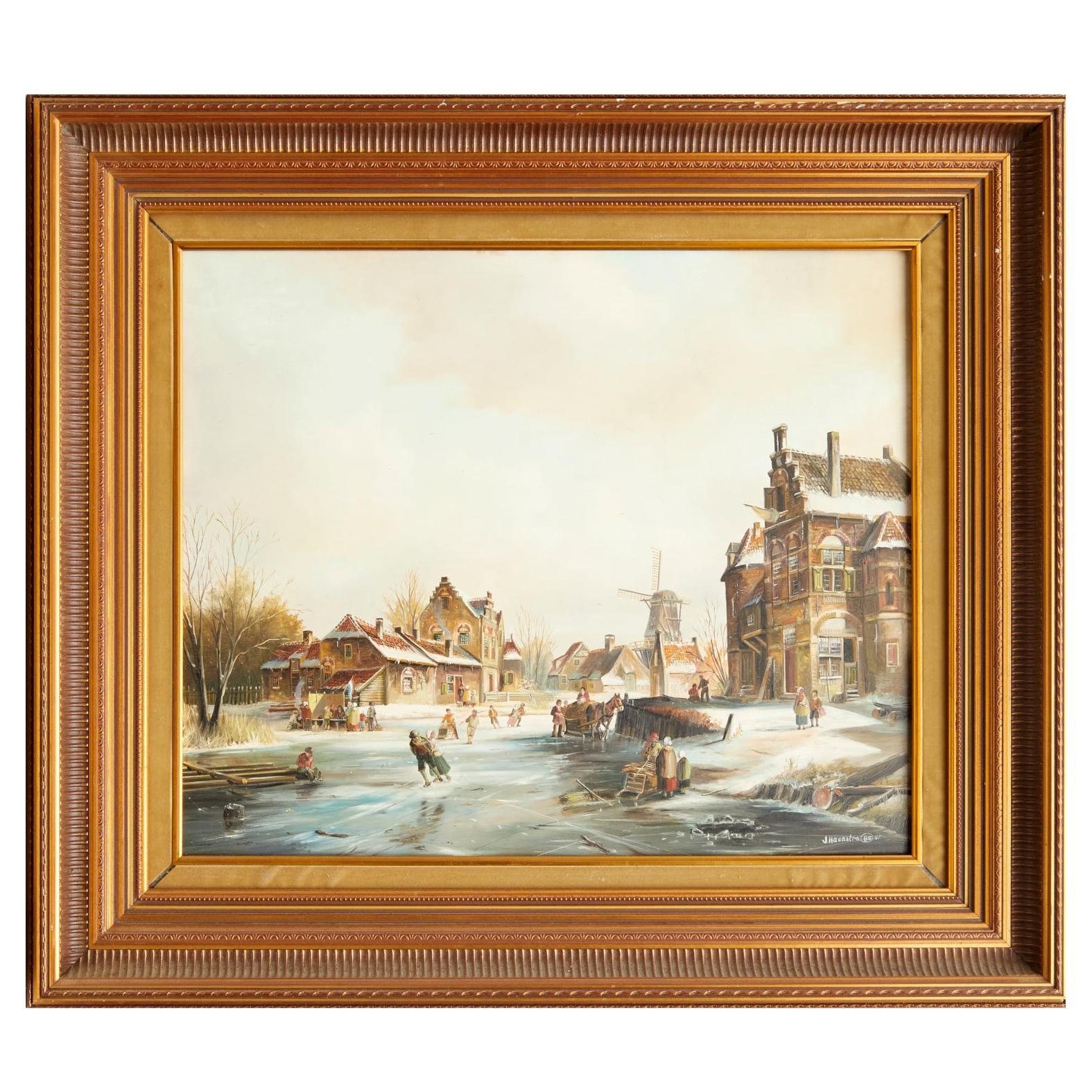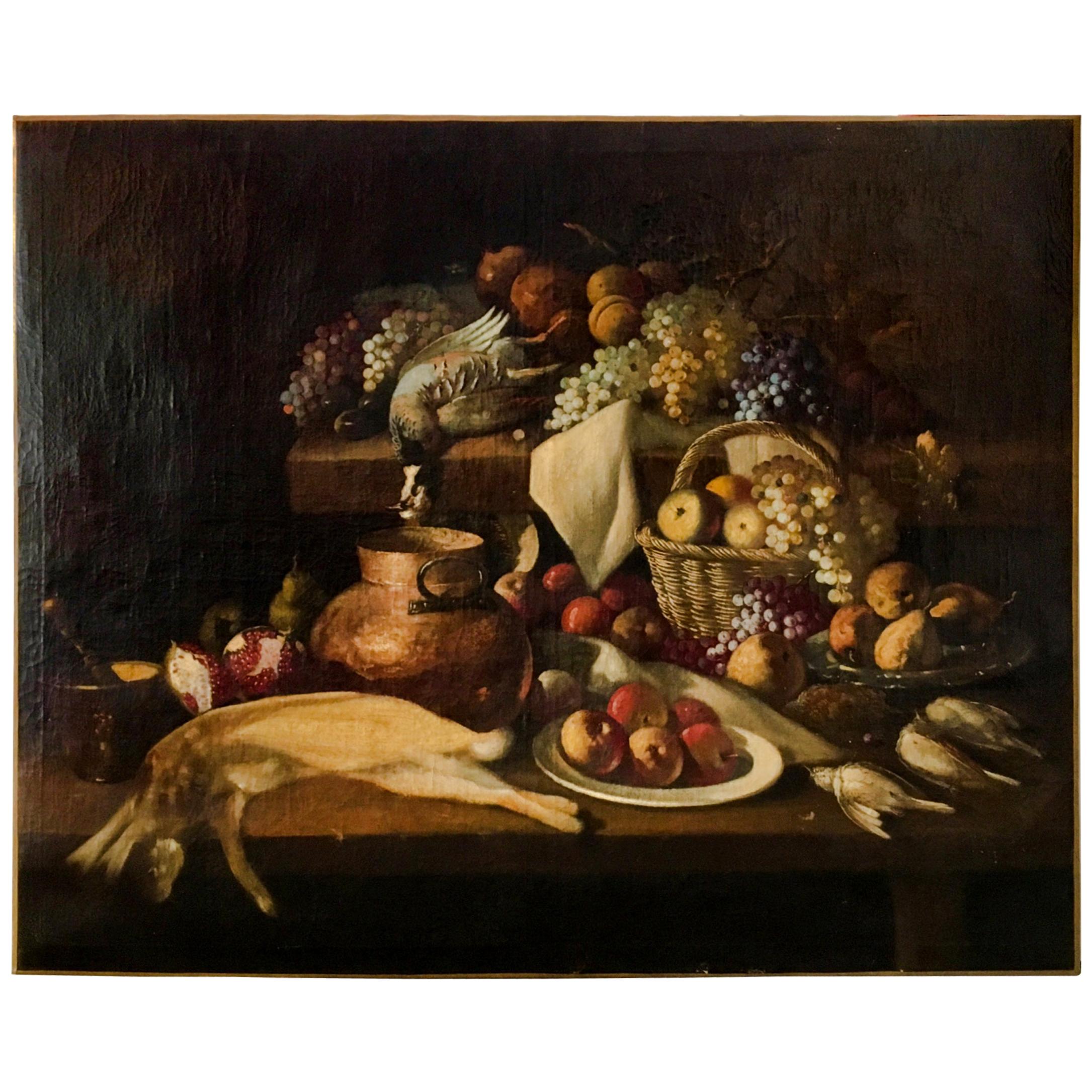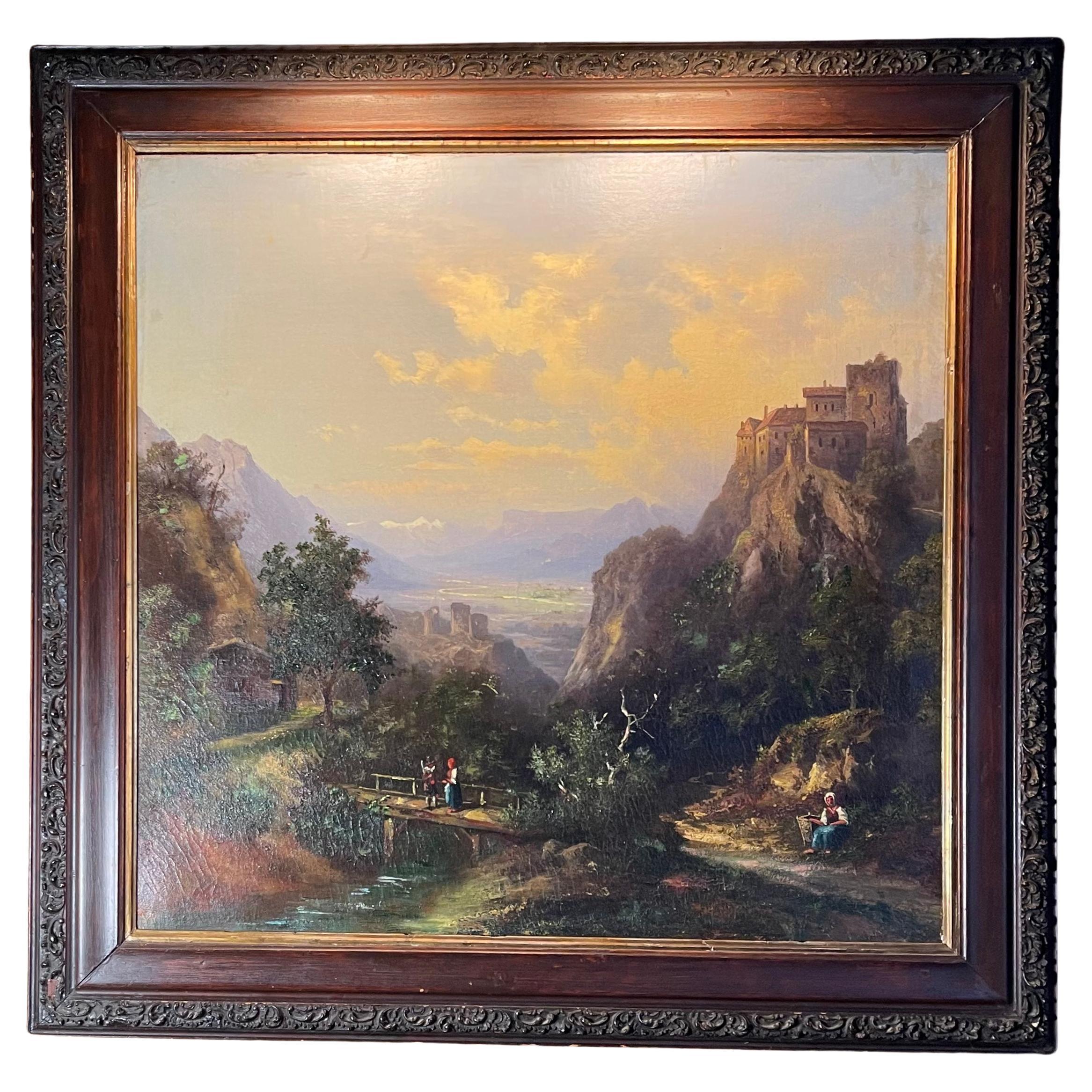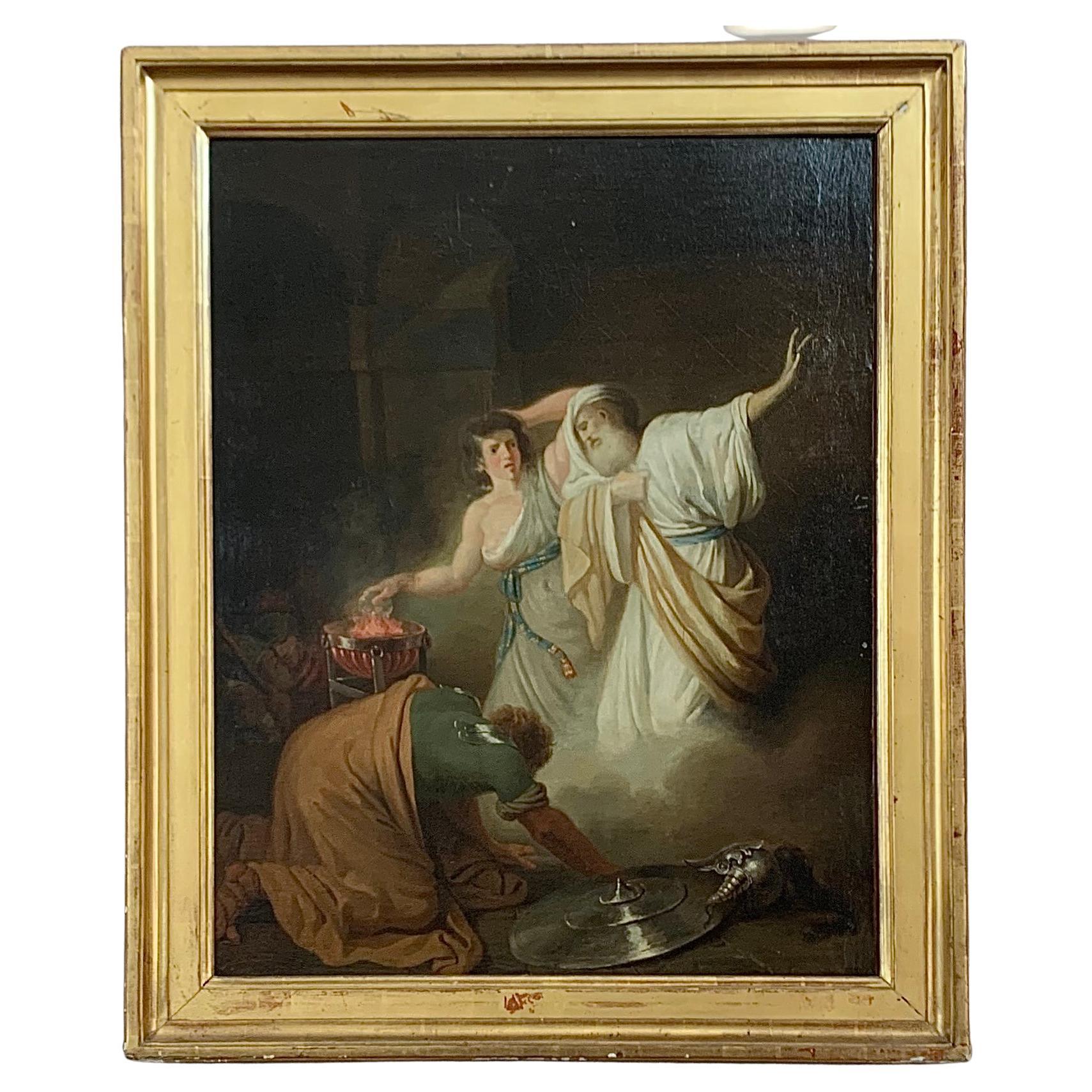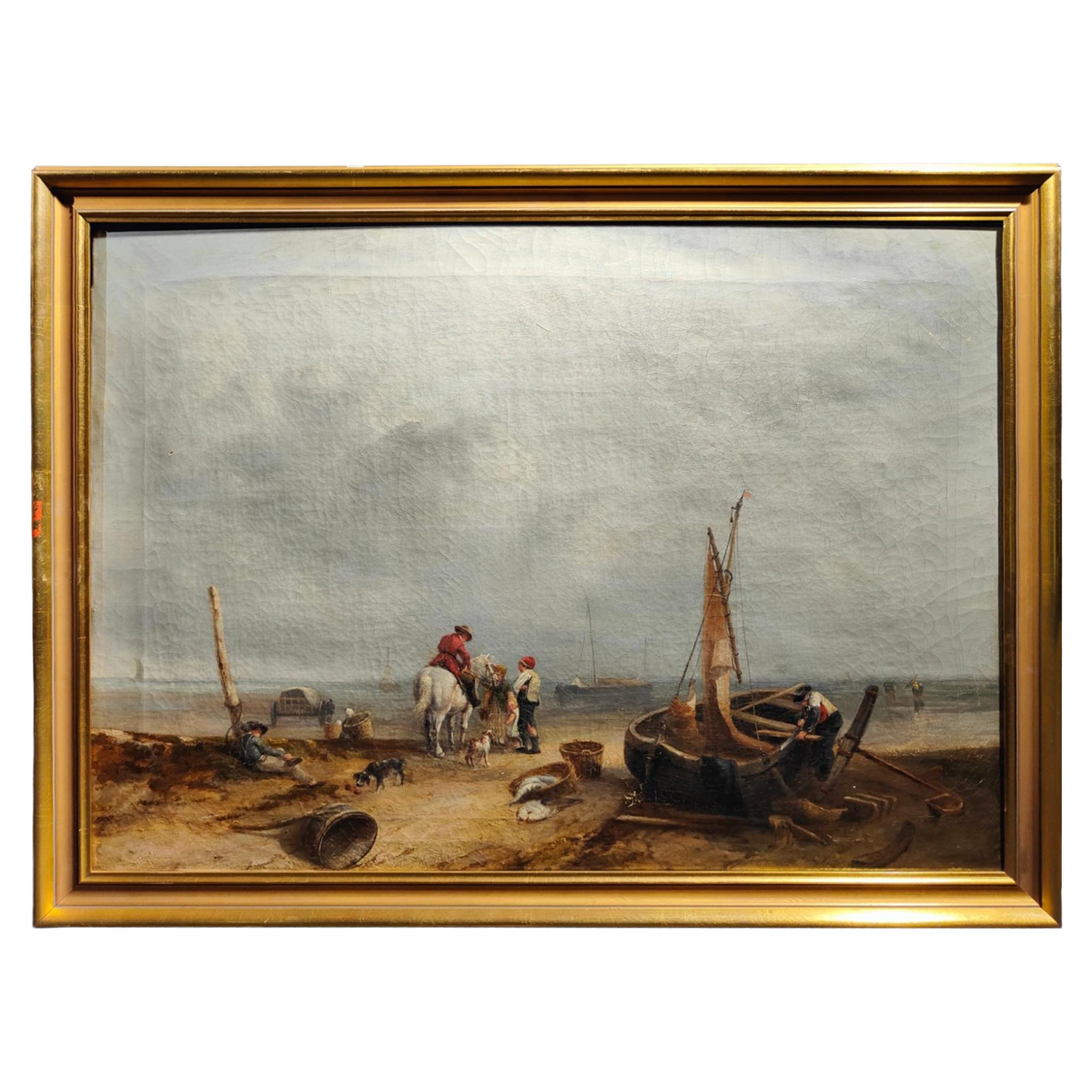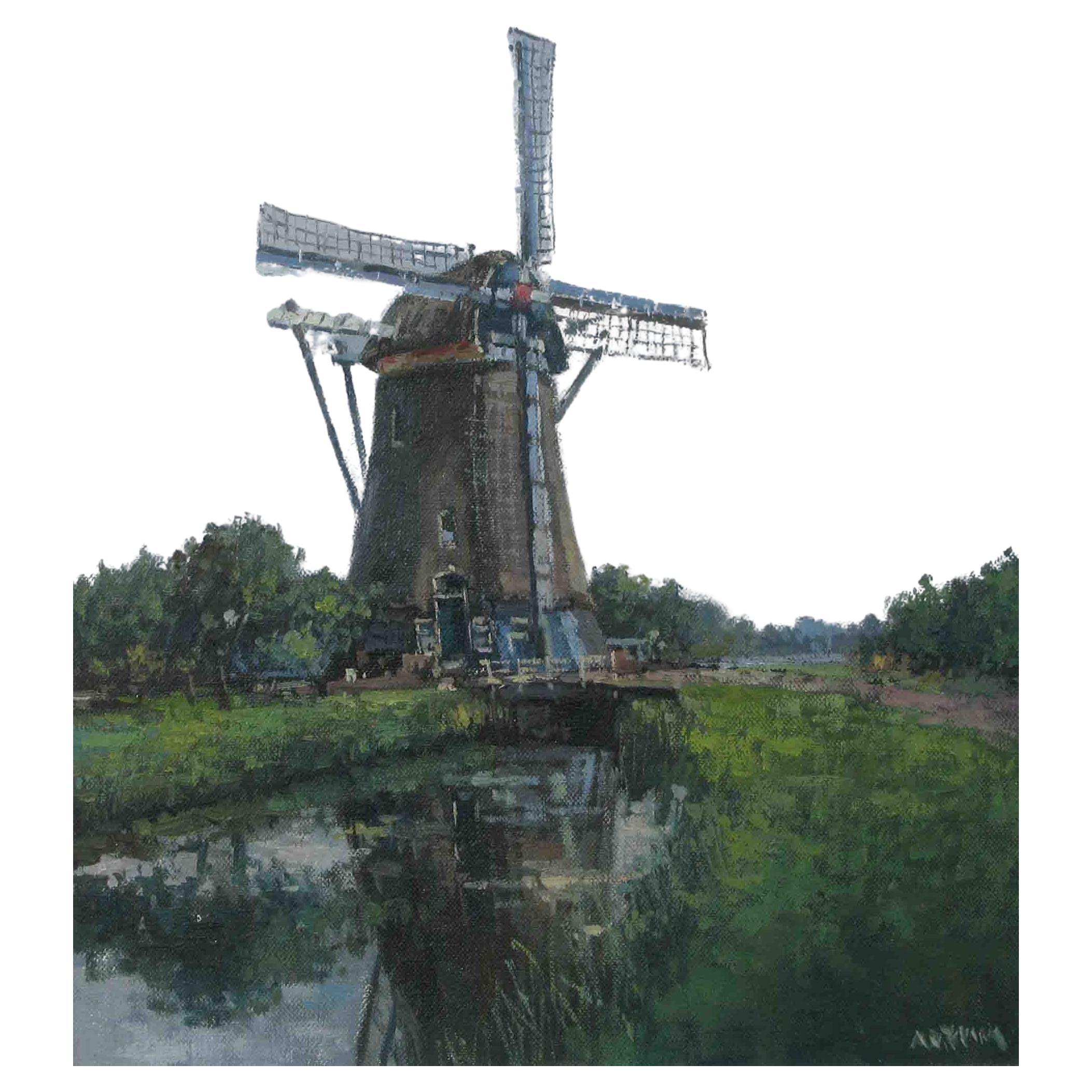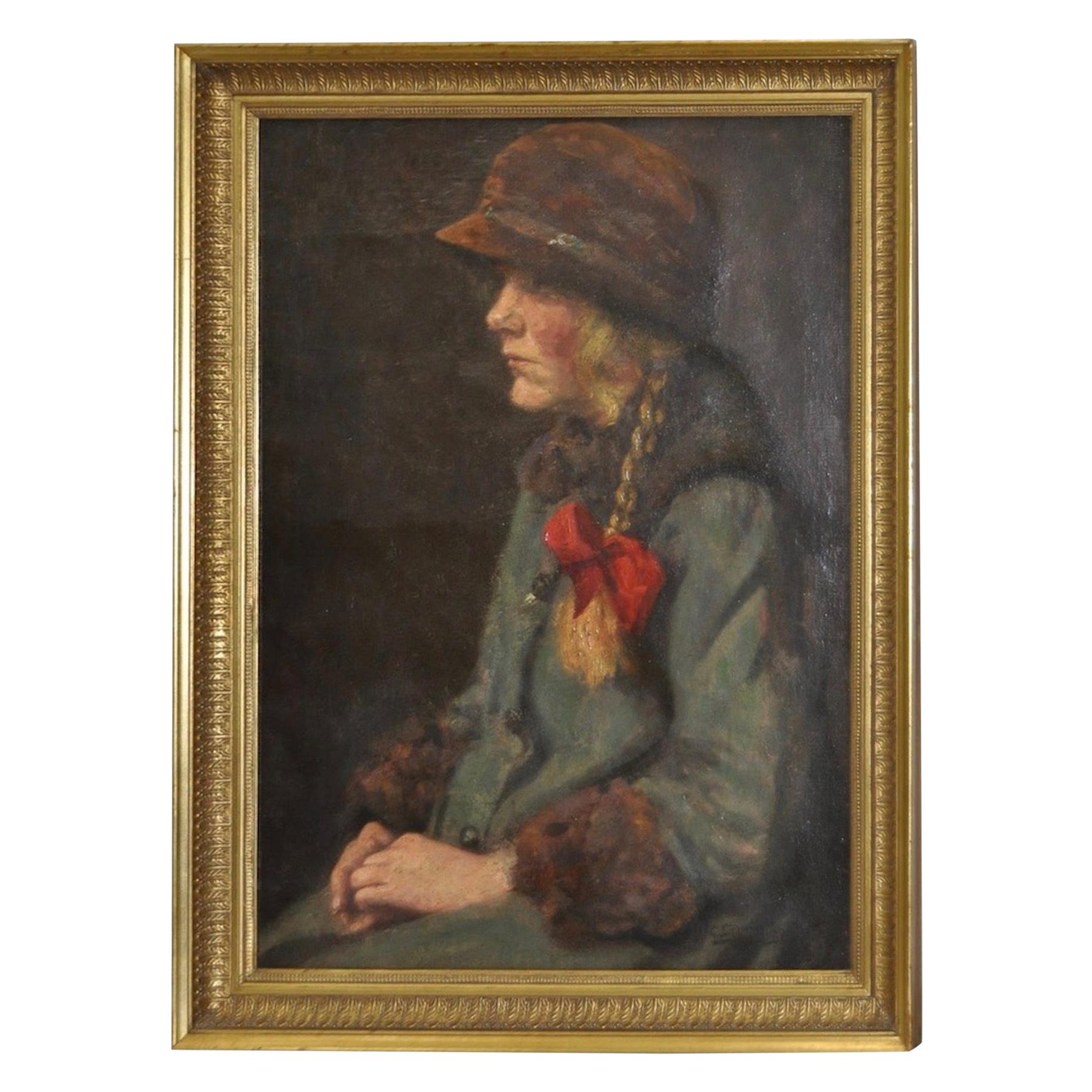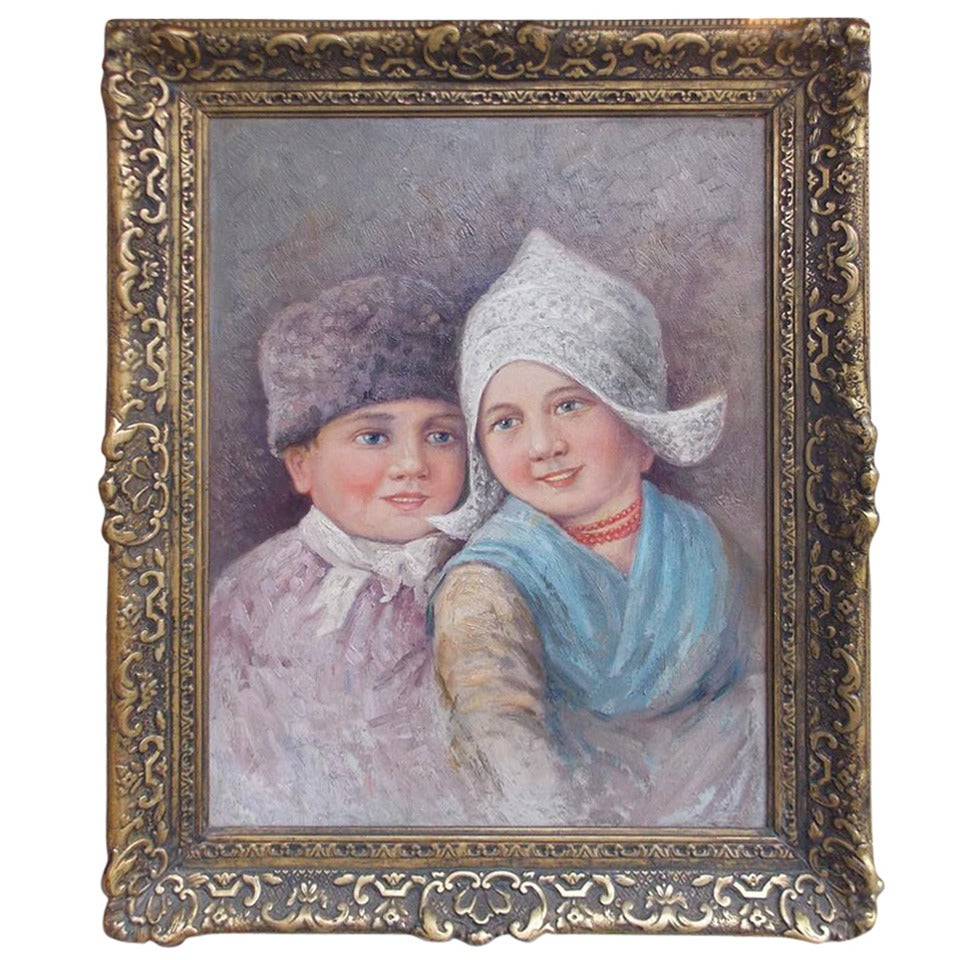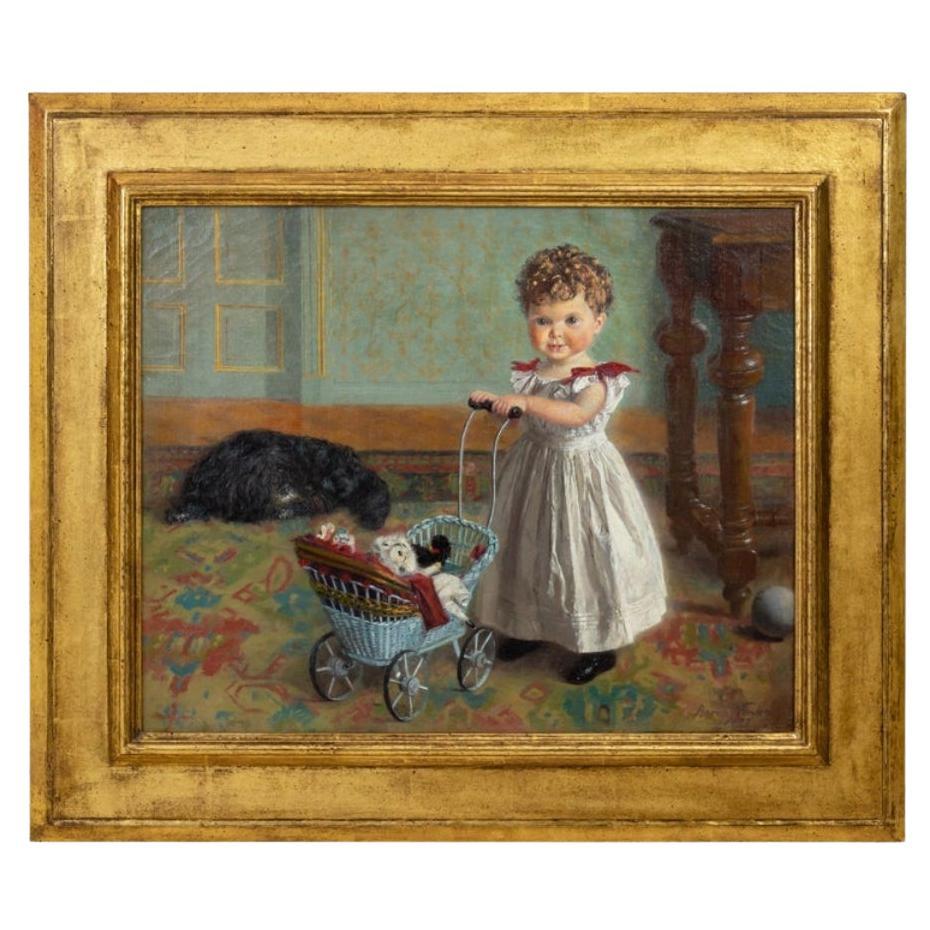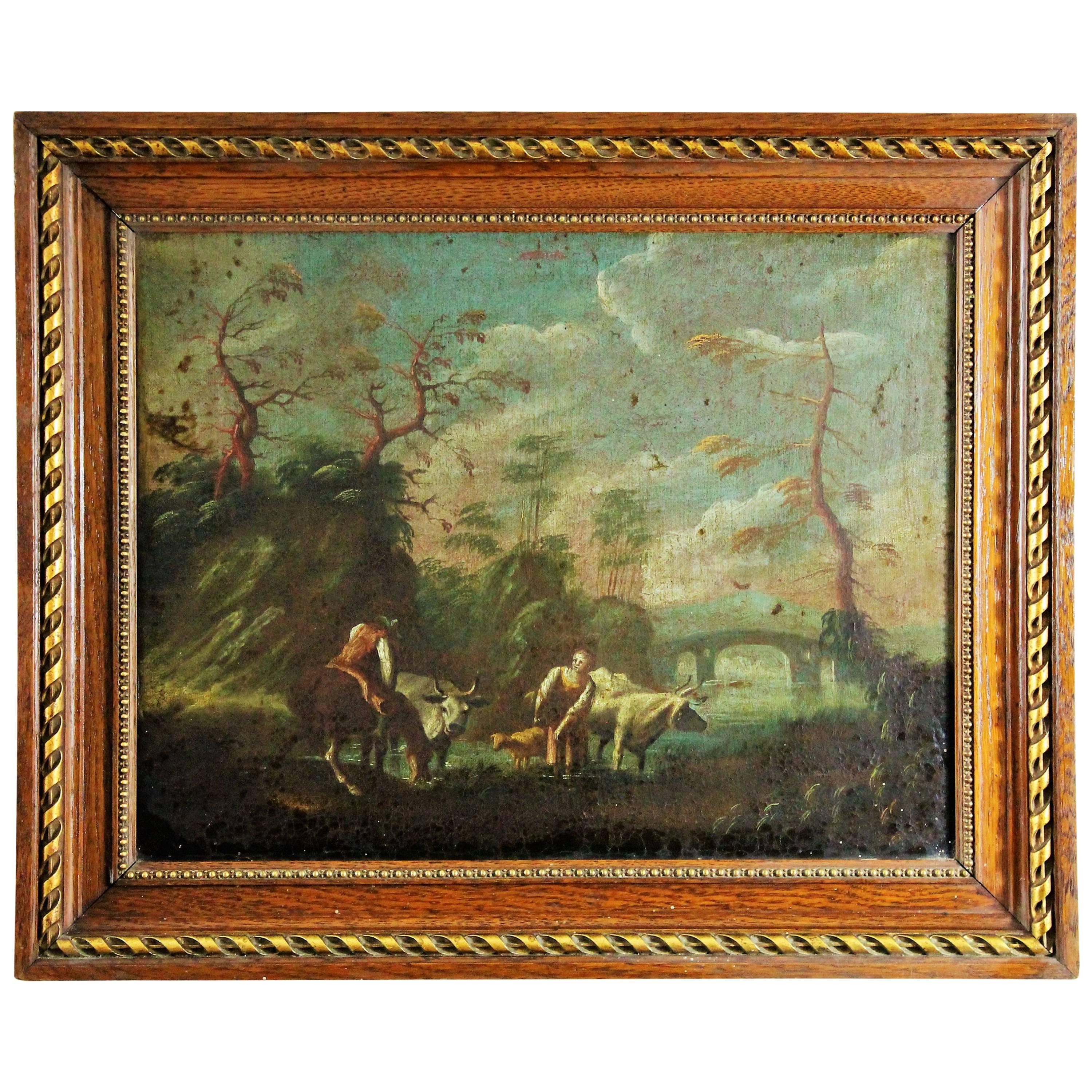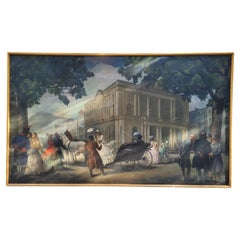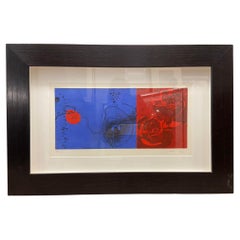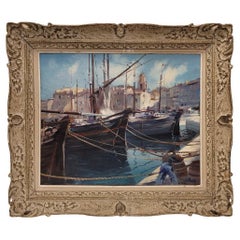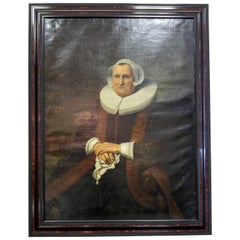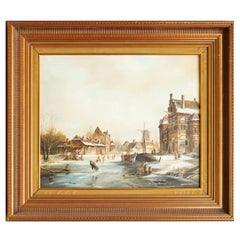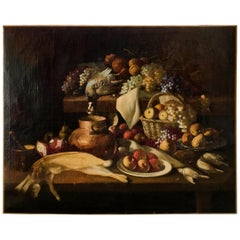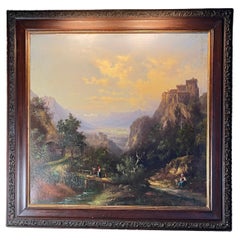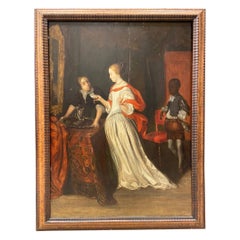
Oil on table Dutch school, " Bourgeois interior with characters
View Similar Items
Want more images or videos?
Request additional images or videos from the seller
1 of 21
Oil on table Dutch school, " Bourgeois interior with characters
$5,709.44List Price
About the Item
- Attributed to:Dutch Originals (Cabinetmaker)
- Dimensions:Height: 38.59 in (98 cm)Width: 30.71 in (78 cm)Depth: 1.97 in (5 cm)
- Style:Baroque (Of the Period)
- Materials and Techniques:
- Place of Origin:
- Period:
- Date of Manufacture:1673
- Condition:Wear consistent with age and use.
- Seller Location:Valladolid, ES
- Reference Number:1stDibs: LU2943331675422
About the Seller
4.7
Gold Seller
Premium sellers maintaining a 4.3+ rating and 24-hour response times
Established in 1990
1stDibs seller since 2017
159 sales on 1stDibs
Authenticity Guarantee
In the unlikely event there’s an issue with an item’s authenticity, contact us within 1 year for a full refund. DetailsMoney-Back Guarantee
If your item is not as described, is damaged in transit, or does not arrive, contact us within 7 days for a full refund. Details24-Hour Cancellation
You have a 24-hour grace period in which to reconsider your purchase, with no questions asked.Vetted Professional Sellers
Our world-class sellers must adhere to strict standards for service and quality, maintaining the integrity of our listings.Price-Match Guarantee
If you find that a seller listed the same item for a lower price elsewhere, we’ll match it.Trusted Global Delivery
Our best-in-class carrier network provides specialized shipping options worldwide, including custom delivery.More From This Seller
View AllFrance Oil on panel “Marina”, French School
By French House & Garden
Located in Valladolid, ES
Exceptional painting depicting a Mediterranean seascape. The two fishing boats in the center of the composition stand out. In the far distance, a village with a small harbor, charact...
Category
Antique Early 1900s French Beaux Arts Paintings
Materials
Wood, Giltwood, Paint
Catalan School Large Painting "The Walk" Oil on canvas , Romantic style
By Mary Spain
Located in Valladolid, ES
“The walk”, Lluís Muntané Muns, Catalan School, pp. 20th century - Spain
Technique on support: oil on canvas
Title of the work: “The Walk”
Author: Lluís Muntané Muns (1899 - 1987)
Style/School: Catalan School
Period: first half of the 20th century
Country of origin: Catalonia, Spain
Origin: Banco Santander
Some damage visible in the photographs and that could be restored
Dimensions: 204 x 343 cm.
One of a kind and Large oil on canvas signed by Lluís Muntané Muns depicting a pleasant everyday scene, aristocrats and bourgeois taking a walk along a wide avenue. The ladies with their elegant dresses and parasols and the men with long coats.
This work is unique, not only for its pictorial quality in such a large, almost muralist size, but for its traceability, it was commissioned at the beginning of the 20th century and includes a bank building from the end and beginning of the 20th century in Latin America.
The composition is divided into a horizontal strip in the lower half in which the different characters are arranged, conversing with each other, flanked by the trees that appear at the ends. Behind them, in the center of the composition rises a large neoclassical-style building that escapes towards the landscape that can be seen in the background.
Lluís Muntané Muns opted for a realistic academicism, of high quality but with sober and static expression, which is also reminiscent of some of the characteristics of Catalan noucentisme. Although most of his career was dedicated to portraits, he also cultivated muralism. A lover of chiaroscuro, he managed to provide warmth to his plastic environments with an equally elegant and contained palette. His compositions are always well constructed and have the elegance that seems a dominant note in all aspects of his work.
Noucentisme or Novencentism designates a cultural movement that began in 1906 in Catalonia (propounded by Eugenio d'Ors), claiming the need for a classicism with a sense of modernity, but that was at the same time linked to tradition, given its nationalist mood. . Catalan identity linked to the classic substratum of Catalonia and its connection with the Mediterranean. He wanted to break with the cosmopolitan character of Modernism and the transience of Impressionism. He set out to achieve a more objective, constant and, ultimately, eternal art. For this, the idea of the “classical” (but never an explicit copy of said period) and the “Mediterranean” was used and the way to capture it in painting was through static, balanced, and simple compositions. It must be pointed out that it cannot be understood as a style, but as a series of ideas that each artist understands in his own way.
In this case, the memory of noucentisme is appreciated above all in the composition: a feeling of serenity, proportion, the figures do not present very exaggerated or grandiose movements... It attempts to represent the eternal through compositional balance. The colors seem muted because this effect was sought, since they understood classicism as something serene and balanced.
Lluís Muntané Muns (Mataró, Barcelona, 1899 – Barcelona, 1987)
A disciple of Vicente Borrás and José...
Category
Vintage 1920s Spanish Romantic Paintings
Materials
Canvas, Paint, Wood
$4,381 Sale Price
35% Off
Korea Etching by Deok Sung Kang, numbered 75/75
By Duck Shin
Located in Valladolid, ES
Gorgeous Etching, with aquatint and color matrix by the South Korean artist Deok Sung Kang, made around 1990. The works of this artist, although they tend towards abstraction, are really inspired by nature. They illustrate a very personal vision of everyday objects and phenomena. The creative brilliance of this artist is widely recognized.
In this case, the work is divided into two areas, the first of which is dominated by a red color, which represents a pair of red roses using a rather realistic technique. However, in contrast, a larger area of intense blue inspired by natural motifs and splashed with a red spot.
About the artist
Deok Sung Kang is a painter and printmaker of South Korean origin. He studied Fine Arts in his native country, although he later attended the École de Beaux Arts in Paris and, later, in 1989, he settled in Madrid, where he continued his studies at the Complutense University of Madrid. The highlight of his facet as a painter are his prints, often using rice paper as a support.
Most of his works have been exhibited at fairs and exhibitions in Spain, but he has also done some in his country, such as at the Art Museum in Seoul.
About the technique
The origin of prints in Asian art has its foundations in the knowledge of printing texts on woodblocks, around the 8th century. Over time, it evolved and this new art became accessible to the majority of the public, opening the doors to the enjoyment of art and collecting, which until then was limited only to merchants, rich warriors...
Gprgeous Etching is a type of engraving, which is made using a metal plate (iron, zinc or copper) as a base, which is covered with a light layer of a protective varnish or acid-resistant wax. The engraver draws with a stylus on the layer of varnish, reaching just up to the metal plate. Later, the plate is dipped in etching, hence its name, a solution based on water and nitric acid, which corrodes the copper in the areas where it was not protected by the varnish. The immersion time is what determines the depth of the line.
Metal plates engraved with this technique can be printed with the desired ink colour, prepared by combining various pigments and binders.
Beautiful work of art by the contemporary Korean artist Duck Sung Kang...
Category
1990s Korean Mid-Century Modern Paintings
Materials
Paper
$727 Sale Price
20% Off
Gabriel Deschamps French Oil on canvas “Saint Tropez”
By Gabriel Deschamps
Located in Valladolid, ES
Technique on stand: Oil on board
Title of the work: "Saint Tropez"
Author: Gabriel Dechamps (1919 – 2011)
Signed in the lower right corner
Period: Se...
Category
Vintage 1970s French Mid-Century Modern Paintings
Materials
Wood, Paint
$2,656 Sale Price
52% Off
Oil on canvas Spanish “Portrait Toribio of Velasco and Viguri”
By Spanish Manufactory
Located in Valladolid, ES
Outstanding oil on canvas portrait depicting a child, Toribio de Velasco y Viguri, whose name appears written in gold letters in the upper right corner against the dark background of...
Category
Antique 1850s Spanish Romantic Paintings
Materials
Canvas, Giltwood, Paint
French Oil on Canvas Yellow blue Still llife ROGER CHAPELAIN-MIDY signed
By Roger Chapelet
Located in Valladolid, ES
One of a kind painting by ROGER CHAPELAIN-MIDY (Paris, 1904-1992).
"Still life" , Oil on canvas. Signed in the lower left corner.
Size: 97 x 76 cm; 122 x 105 cm (framed)
R. Chapelai...
Category
Vintage 1940s French Beaux Arts Paintings
Materials
Canvas, Giltwood, Paint
You May Also Like
19th century Dutch Portrait Oil on Canvas
By Ferdinand Bol 1
Located in Savannah, GA
Early copy of Dutch painting. Oil on canvas in antique style wooden frame. “Elisabeth Bas (1571, in Kampen – 2 August 1649 in Amsterdam) was a figure in the Dutch Republic. She was the wife of Jochem Hendrickszoon Swartenhont, an admiral in the navy of the Dutch Republic and military hero.
The portrait is now in the Rijksmuseum Amsterdam, where it is known as Elisabeth Bas and attributed to Ferdinand Bol...
Category
Antique Early 19th Century Dutch Baroque Paintings
Materials
Canvas, Wood
$11,950 Sale Price
20% Off
Large Framed 20th Century Dutch School Winter Scene, John Haanstra, Oil on Board
Located in Morristown, NJ
John Haanstra (Dutch, b. 1940), signed and dated 1985 on lower right. A charming oil painting, showing a winter landscape. Skaters are enjoying seasonal fun on a frozen canal while others go about their daily activities. A typical Dutch windmill can be seen in the background. Typical Dutch style housing can be seen in the foreground. The sky seems to be laden with more snow, creating the sense of more winter fun...
Category
Vintage 1980s Dutch Modern Paintings
Materials
Wood, Paint
17th Century Large Dutch Painting Still Life with Fruit and Game, Oil on Canvas
Located in Vero Beach, FL
This large, old master still life painting is a perfectly balanced composition of fruit and game birds. In the foreground a rabbit is stretched out. A copper kettle and a basket are ...
Category
Antique 17th Century Dutch Baroque Paintings
Materials
Canvas, Paint
American Painting, Hudson River School, Oil on Canvas
Located in Huntington, NY
American painting, Hudson river school, Oil on canvas.
Category
Antique Late 19th Century Paintings
Materials
Canvas, Wood
$6,800 Sale Price
20% Off
17th Century Madonna with Child Painting Oil on Canvas Tuscan School
Located in Milan, IT
17th century, Tuscan school
Madonna and Child
Oil on canvas, 31 x 21 cm
With frame, cm 37,5 x 27,5
The pearly incarnations and the thoughtful play of looks between the Virgin, turned to the Son, and Questi, warmly open to the viewer, pour out the present painting with compositional perfection. Virginal fabrics become mottled at the folds, wrapping the Madonna in a thin vitreous mantle. The pastel colors, shining on the pink robe just tightened at the waist by a gold cord, enliven the faces of the divine couple in correspondence of the cheeks, lit by an orange warmth. Even the left hand of the Virgin, composed in perfect classical pose (Botticelli, Madonna with Child, 1467, Musée du Petit Palais, Avignon), is sprinkled with warmth thanks to the immediate touch with Christ. From the nimbus of the Mother a delicate luminous disk is effused, which takes back, in the most distant rays, the colour of the hair of the Son, from the tones of the sun. The Child Jesus is represented intent in a tender gesture of invitation with the right hand, while with the other he offers a universal blessing: with his hand he retracts the index and annular palms, extending the remaining three fingers, symbol of Father, Son and Holy Spirit.
The painting welcomes and re-elaborates that typically Tuscan formalism that boasted in the rest of Italy the constant appreciation by the most up-to-date artists and collectors. Arrangement, composition and mixing of colors place the canvas in the middle between the changing mannerist and the sculptural figures of Michelangelo, essential yardstick of comparison in terms of anatomical and expressionistic rendering. In the present, silvery and pinkish powders act as three-dimensional inducers to the Child’s mentioned musculature and to the vivid folds of the clothes, expertly deposited on the lunar whiteness of the skins. While these colours recall the equally brilliantly transparent colours of Pier Francesco Foschi...
Category
Antique 17th Century Italian Paintings
Materials
Canvas
Oil on canvas - Benjamin West School "Saul Evoking the Shadow of Samuel" - 18th
By Benjamin West
Located in Beuzevillette, FR
"Saul with the Pythoness Evoking the Shadow of Samuel".
Beautiful oil on Canva, work of the English school of the entourage of Benjamin West.
This oil on canvas represents a bibl...
Category
Antique 1780s English Baroque Paintings
Materials
Canvas
